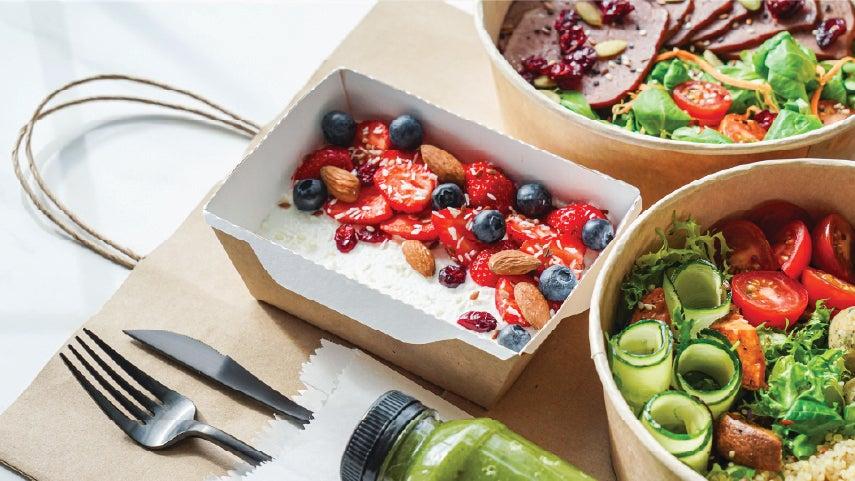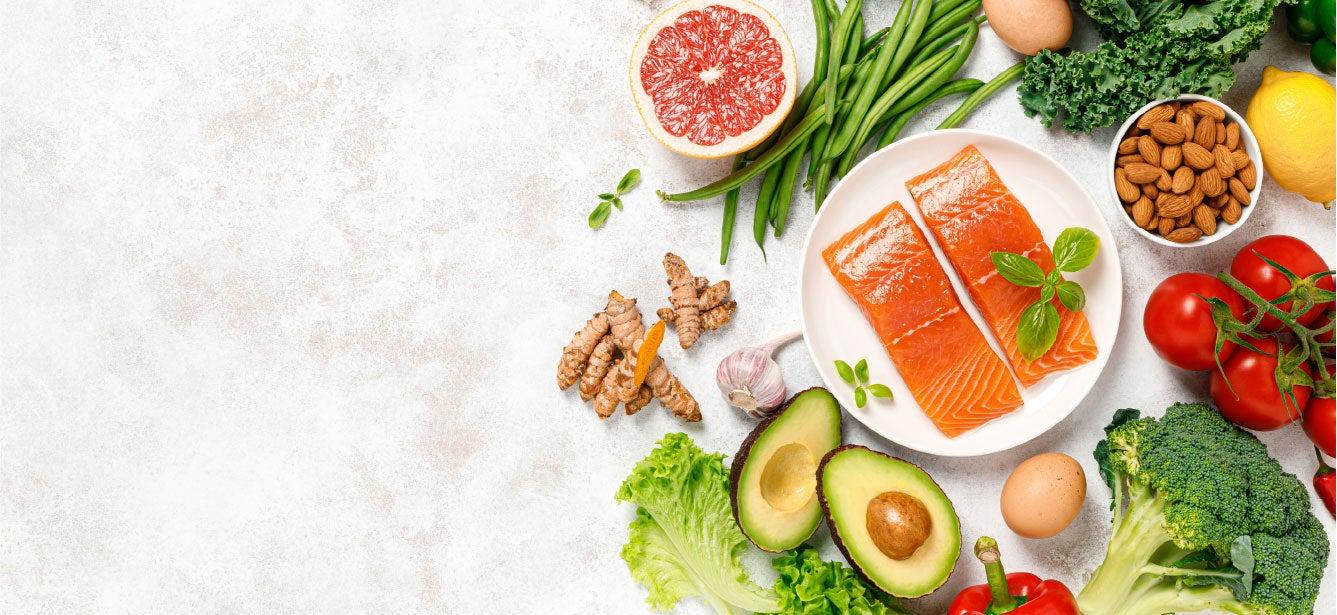
Related Topics
If you've been diagnosed with high blood pressure, you may be wondering if the foods you eat could play a role in your condition. The answer is yes. Lifestyle factors such as diet can have a major impact on lowering blood pressure. In fact, some older adults are able to get their blood pressure under control just by changing what they eat. This in turn can potentially reduce or even eliminate their need for blood pressure medication. Home blood pressure monitors can help you keep track of your levels.
What about salt and high blood pressure?
It's well-understood that salt, which is primarily made up of the mineral sodium, can contribute to high blood pressure levels. According to the Centers for Disease Control and Prevention (CDC), Americans consume far more sodium than they need. The 2020–2025 Dietary Guidelines for Americans advise that adults should consume less than 2,300 mg of sodium each day. If you have high blood pressure, the American Heart Association recommends an intake of no more than 1,500 mg daily.
While watching your salt intake is important, it's only one part of the equation. If you want to reduce your risk of heart attack, stroke, and other complications, fill your plate with blood pressure-friendly foods.
How to lower blood pressure with food
What food lowers blood pressure quickly? What is the fastest way to lower blood pressure naturally? Here are 10 foods that can promote normal blood pressure levels and support your overall health:
- Unsweetened yogurt. A 2021 study showed that yogurt may produce positive blood pressure outcomes for those with hypertension.1 This is attributed to its high amounts of the minerals calcium, potassium, and magnesium—all thought to help regulate blood pressure. Look for unsweetened natural and Greek yogurts, which can be blended with fruits, seeds, and nuts for a healthy breakfast or snack.
- Berries: Strawberries and blueberries are rich in antioxidant compounds called anthocyanins. Research has linked anthocyanins to a reduction in blood pressure in people with hypertension.2 In more good news, berries are delicious! Sprinkle them over your yogurt, cereal, or oatmeal, or enjoy them as a sweet afternoon snack.
- Beets: This root vegetable is high in nitrates, which the body converts into nitrous oxide, a molecule that's been shown to reduce systolic blood pressure.3 Try beets as a side dish or add it raw to salads. You can even purchase beetroot juice (with no added sugar) to drink on its own or add to smoothies.
- Sweet potatoes: Loaded with magnesium, potassium, and fiber, this side dish superstar is a delicious way to lower blood pressure.
- Leafy greens: Cabbage, collard greens, spinach, kale, and other greens are high in nitrates, which have been found to offer blood pressure benefits.4 It's easier to get your daily dose of greens by varying how you eat them. For example, you can sauté spinach for a tasty side dish, add fennel to soup, or bake a batch of kale chips in the oven.
- Fatty fish: Salmon and mackerel are packed with heart-healthy omega-3 fatty acids and vitamin D, nutrients that can help lower and regular blood pressure. Just lightly season your favorite filet, add a dash of olive oil, and broil in the oven.
- Whole grains (especially oatmeal): Oats and other whole grains contain a type of fiber called beta-glucan, which may lower both systolic and diastolic blood pressure. Start your morning with a bowl of unsweetened oatmeal, use whole-grain bread for your lunch sandwiches, or have a side of seasoned quinoa with dinner.
- Pistachios: Eating pistachios may lower blood pressure and cholesterol.5 These healthy nuts, best eaten unsalted, can add crunch and flavor to salads of all kinds. You can also blend them into pesto or enjoy a couple of handfuls as a snack.
- Bananas: Potassium is an essential mineral that helps the body get rid of sodium, relaxes blood vessels, and lowers blood pressure. Just one medium-sized banana packs a powerful potassium punch: about 420 milligrams. Beans, tomatoes, mushrooms, and avocado are other potassium-rich foods that may help lower blood pressure naturally.
- Kiwifruit: According to one study, eating two kiwifruit daily may help lower blood pressure.6 Kiwi is delicious chopped up in fruit salad or sprinkled on top of plain yogurt.
The foods listed above fit into the DASH (Dietary Approaches to Stop Hypertension) diet guidelines. DASH is an eating plan recommended by the National Heart, Lung, and Blood Institute (NHLBI). It's been shown to reduce the risk of heart disease by lowering high blood pressure and improving cholesterol levels. The DASH plan generally focuses on:
- Eating plenty of fruits, vegetables, and whole grains.
- Limiting sugar-sweetened beverages and desserts.
- Limiting foods high in saturated fat.
- Consuming fat-free or low-fat dairy products.
- Eating fish, poultry, beans, nuts, and vegetable oils.
Many of these recommended foods can be found in meal delivery kits, which deliver pre-portioned meals directly to your doorstep. Most of these kits are designed with balanced nutrition in mind.
Foods to avoid with high blood pressure
We've discussed how to lower blood pressure by eating right. But what foods should you skip if you have hypertension? Below are some foods that raise blood pressure quickly or over time. Consume them in careful moderation or avoid them altogether:
- Fatty meats, and processed meats such as hot dogs and sausage
- Salted snacks like pretzels and potato chips
- Canned soups and vegetables
- Dried soup mixes
- Deli meat
- Fast food
- Butter
- Margarine
- Potato chips
- Salted popcorn
- Salted nuts
- Whole-milk dairy products
- Condiments (ketchup, salad dressing)
- Pickled food in brine
- Boxed mixes for rice, pasta, and potatoes
SNAP and healthy eating habits go hand in hand
If you want to lower your blood pressure naturally—but you’re having trouble affording healthy food—you may be a candidate for SNAP (Supplemental Nutrition Assistance Program). SNAP provides monthly financial assistance that can help you stretch your food budget further. SNAP can also be used in grocery stores and for some online grocery delivery programs.
For older adults like Kellee Lightfoot, age 87, SNAP can provide much-needed breathing room. After paying for rent and utilities, Lightfoot says, there isn't much left over to buy food. She applied for SNAP and now receives $180 a month in benefits.
I can purchase foods that support my diabetic diet," Lightfood said.
Checking your SNAP eligibility is fast and easy with NCOA's online benefits screening tool. Just visit BenefitsCheckUp.org and select your state of residence. If you need additional assistance, we’ll put you in touch with someone who can guide you through the SNAP application process.
Sources
1. University of South Australia. A daily dose of yogurt could be the go-to food to manage high blood pressure." ScienceDaily. ScienceDaily, 7 December 2021. Found on the internet at https://www.sciencedaily.com/releases/2021/12/211207152554.htm
2. Vendrame S. and Klimis-Zacas D. Potential factors influencing the effects of anthocyanins on blood pressure regulation in humans: A review. Nutrients. June 25, 2019. Found on the internet at https://www.mdpi.com/2072-6643/11/6/1431
3. Mirmiran P. et al. Functional properties of beetroot (Beta vulgaris) in management of cardio-metabolic diseases. Nutrition & Metabolism. Jan. 7, 2020 Found on the internet at https://www.ncbi.nlm.nih.gov/pmc/articles/PMC6947971/
4. Bordono et al. Vegetable nitrate intake, blood pressure and incident cardiovascular disease: Danish Diet, Cancer, and Health Study. European Journal of Epidemiology. April 21, 2021. Found on the internet at https://link.springer.com/article/10.1007/s10654-021-00747-3
5. Healthline. 9 Health Benefits of Pistachios. Found on the internet at https://www.healthline.com/nutrition/9-benefits-of-pistachios
6. Monro et al. Metabolic and blood pressure effects of consuming two kiwifruit daily for 7 weeks: a randomized controlled trial. Nutrients. July 22, 2022. Found on the internet at https://www.ncbi.nlm.nih.gov/pmc/articles/PMC9268970/




